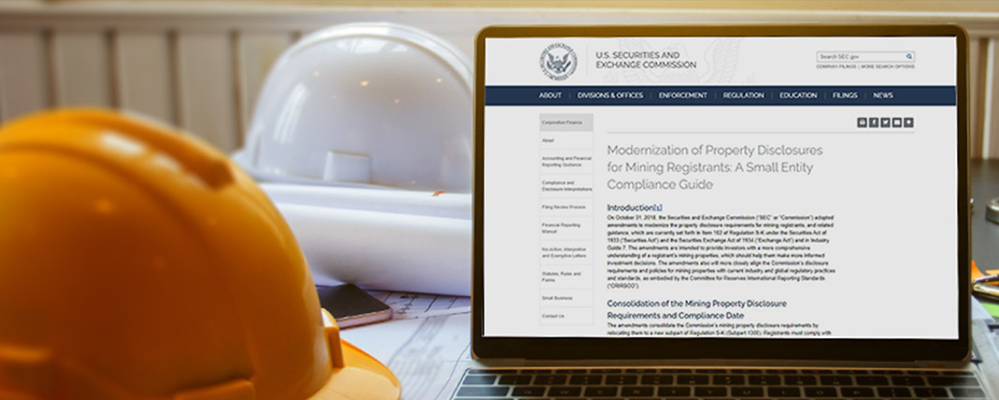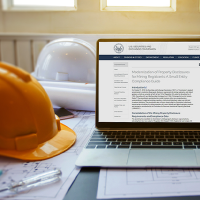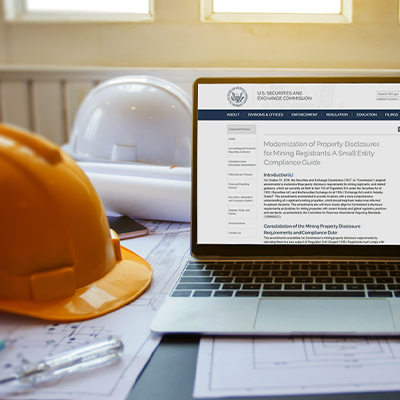How to align your Technical Report Summary with Regulation S-K 1300 [Course]

The U.S. Securities and Exchange Commission (SEC) has replaced Industry Guide 7 for reporting material mining assets with Regulation S-K 1300. Registrants filing annual reports with the SEC now have to comply with the new regulation, so it’s important for registrants to clearly understand what goes into these reports and the major differences between Industry Guide 7 and the new rule. It’s also beneficial to understand why and how these changes came about.
The SEC implemented Regulation S-K 1300 in order to modernize the reporting of exploration results, mineral resources, and mineral reserves and to align them with international reporting standards consistent with the Committee for Mineral Reserves International Reporting Standards (CRIRSCO). This was done primarily to protect and better inform investors. These changes result in a more consistent and transparent system for disclosing exploration results, mineral resources, and mineral reserves.
How is S-K 1300 different from Industry Guide 7?
One of the greatest differences between S-K 1300 and Industry Guide 7 is its detailed guidance on mineral resource and reserve definitions and its requirement to file a Technical Report Summary (TRS) for the disclosure of resources and reserves on material properties. This was not previously required by Guide 7. Because Guide 7 did not provide much guidance on the definition of a mineral resource or on the level of studies required to support their disclosure (in fact, it prohibited their disclosure), S-K 1300 is the first detailed guidance on what the SEC expects in support of mineral resource estimates. In many respects, even the requirements for pre-feasibility studies (PFS) and feasibility studies (FS) in S-K 1300 are more prescriptive than the guidance under Guide 7 (Note: Guide 7 only allowed companies to use FS to support reserve disclosure).
Many registrants are now in the position of having to review their data and portfolio to see if additional economic analysis and technical studies are required for reporting their mineral resources. During this review, it’s common for companies to discover that a lack of drilling data or other technical information might require them to downgrade mineral reserves to mineral resources or exploration results. Companies facing this unpleasant discovery will have to decide to either step up their technical knowledge to the PFS level or downgrade their current mineral reserves.
If companies step up their technical knowledge and conduct technical studies, the summarized results of these studies for each material property must be presented in a TRS. The TRS must be prepared and signed by a Qualified Person (QP), then attached to the annual report filing using Form 10 K.
If you are involved in building a TRS under S-K 1300 for the first time, you might have a lot of questions.
Questions like…
- What content is required in the TRS under S-K 1300?
- How can I reduce my liability as a QP?
- What tools are available to me when building these reports?
- Are there good examples out there for me to review?
- What are some general tips that could make my job easier?
If you’ve asked yourself any of these questions, Maptek offers a course that can provide you with the answers.
Course summary and what you’ll learn:
Maptek training courses are all about you, your learning experience, and translating that experience to success on the job. We know that S-K 1300 still causes confusion and anxiety for many of us in the industry who must now align their reporting with the new requirements and the hundreds of pages of technical explanatory documentation accompanied by the new rule. That’s why we’ve created our S-K 1300 Mine Technical Studies Course to help provide you with the information you need to make progress on your reports before they’re due at the end of the fiscal year.
The course is meant to provide a general overview of S-K 1300 and is designed to teach you about the 25 main sections of the report with a specific focus on what’s needed for disclosure of mineral resources and mineral reserves.
The course will be taught by two instructors, Dr. Kwame Awuah-Offei, the Union Pacific Rocky Mountain Energy Professor in Mining Engineering at Missouri University of Science and Technology, and a Maptek technical staff instructor. Each instructor will focus on different facets of reporting under S-K 1300.
Dr. Kwame Awuah-Offei will use his experience as an expert consultant to the SEC during the final rule adoption stage to lead discussions on each of the 25 sections, explain what each section requires, and offer insight on how you might comply with each section.
The Maptek instructor will show you practical examples of TRS content and show you how to use Maptek software to produce these results. Maptek software like Vulcan and Evolution are useful tools for producing necessary components of your studies and analysis, such as block model generation, design optimization, and/or basic schedules.
By taking the course, you’ll better understand how to comply with S-K 1300, especially when disclosing mineral resources and mineral reserves. You’ll learn tips and tricks from experts on how to produce parts of your TRS using Vulcan and Evolution. You’ll also have the opportunity to learn how to act with the highest professional and ethical standards to reduce your liability as a QP.
The time for QP’s and mining companies to review their data and determine if further technical studies are necessary for their material properties is now. If further technical studies are needed, join us for this crash course on S-K 1300 Mine Technical Studies to familiarize yourself with the new requirements.
Watch the short video below for more information and to meet the course hosts and instructors!
Ready to learn even more? Visit our course page for course dates and to reserve your spot!



